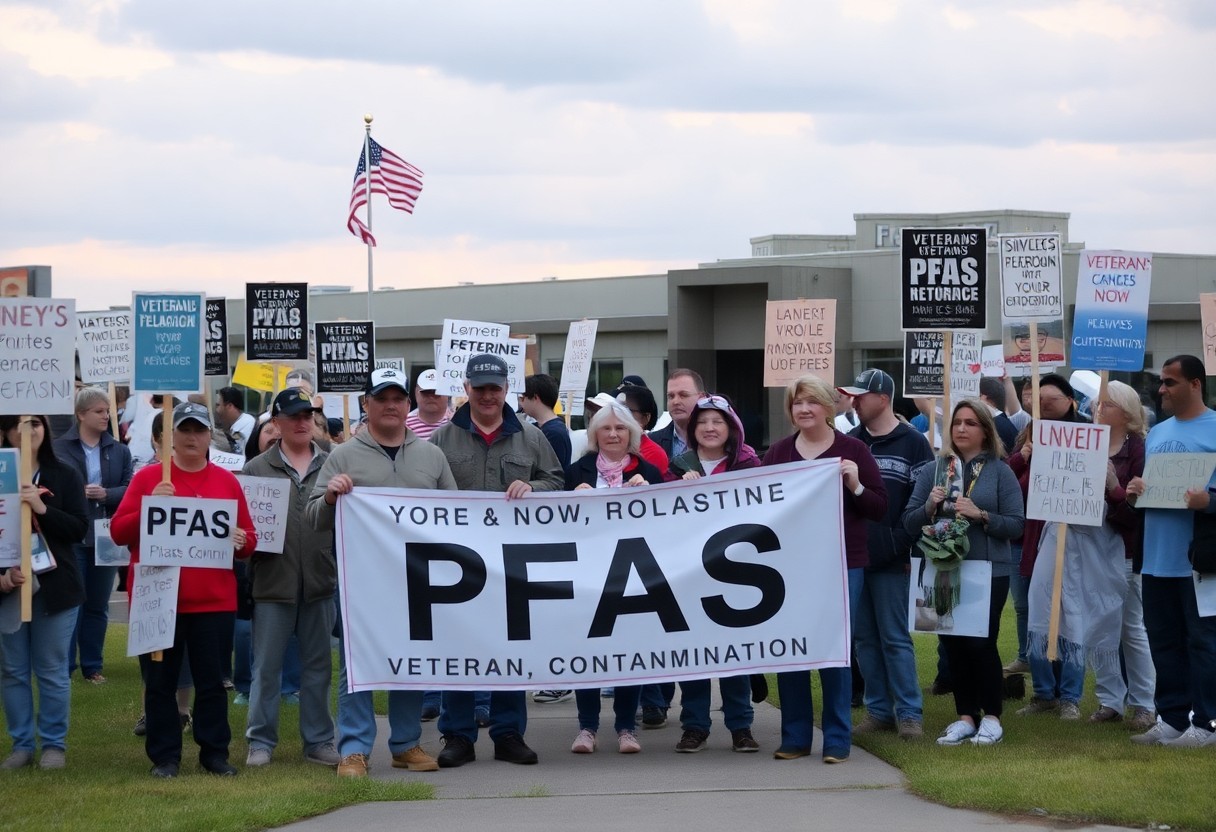There’s growing concern about PFAS exposure and its potential impact on children’s health and development. These toxic chemicals, found in everyday items like non-stick cookware and water-resistant fabrics, can lead to significant long-term effects. Studies indicate that exposure during early life stages can result in developmental delays, impaired immune function, and an increased risk of chronic illnesses later in life. It’s vital to understand how PFAS can affect your child’s well-being to make informed choices and advocate for a safer environment.

Understanding PFAS
While often referred to as “forever chemicals,” PFAS (per- and polyfluoroalkyl substances) are a group of man-made chemicals resistant to water, grease, and stains. They have unique properties that make them useful in various industries, but their persistence in the environment raises health concerns, especially for children. As you learn more about PFAS, understanding their impact and sources is vital to safeguarding your family’s well-being.
Definition and Types of PFAS
Definition: PFAS encompasses a wide range of synthetic chemicals that have been used since the 1940s. You may encounter various types, including:
| PFOS | Used in fire-fighting foams and stain-resistant coatings. |
| PFOA | Found in non-stick cookware and water-repellent fabrics. |
| PFNA | Used in various industrial applications. |
| PFDA | Commonly found in some food packaging materials. |
| GenX | A newer class of PFAS used as a replacement for PFOA. |
The diversity of PFAS types reflects their widespread application, making it important for you to stay informed.
Sources of PFAS Exposure
Any exposure to PFAS can come from various sources, and understanding these can help you reduce risks for your family. Common sources include contaminated water supplies, food packaged in PFAS-treated materials, and consumer products such as cleaning supplies and textiles.
At home, your tap water may be a potential source of PFAS, especially if you live near industrial areas. Additionally, takeout food containers, fast food wrappers, and non-stick cookware can also contain these substances. Children are particularly vulnerable, as they may have a higher exposure rate through dust, soil, and even breast milk. You should consider using PFAS-free products and having your water tested to protect your family’s health. Staying informed about these sources is vital for minimizing exposure.
Mechanisms of PFAS Impact
Now, understanding the mechanisms through which PFAS affect health is vital for recognizing their potential long-term consequences. These chemicals disrupt several biological pathways in the human body, often targeting the endocrine system, which regulates hormones vital for growth and development. This disruption can lead to a variety of health issues, highlighting the importance of awareness and prevention in your environment.
Biological Pathways
Among the numerous biological pathways affected by PFAS, the interference with endocrine function is particularly concerning. PFAS have been shown to mimic or inhibit hormone actions, potentially leading to altered metabolism and reproductive health issues. This disruption can affect your child’s growth patterns and overall health, emphasizing the necessity for vigilant health monitoring.
Developmental Vulnerabilities in Children
Behind the mechanisms of PFAS impact lies a heightened vulnerability in children due to their developing bodies and systems. As their brains and organs mature, they are less equipped to handle toxic exposures, which can result in significant long-term health issues. Children exposed to PFAS may experience developmental delays, learning disabilities, and changes in immune system function, which can profoundly affect their well-being.
Even a low level of PFAS exposure is alarming, as it may lead to cognitive impairments and behavioral issues in children. Their developing systems are more susceptible to disruption from these chemicals, increasing the risk of chronic health conditions later in life. In particular, the potential for lasting effects on neurodevelopment means that vigilance is necessary. Understanding these developmental vulnerabilities can empower you to make informed decisions about your child’s environment and health.
Health Outcomes Associated with PFAS
Some health outcomes linked to PFAS exposure in children include immune system dysfunction, increased cholesterol levels, and potential reproductive issues. Studies indicate that these chemicals can disrupt hormonal balance and may influence growth patterns, leading to obesity and other metabolic disorders. Understanding these risks is vital for safeguarding your child’s long-term health.
Physical Health Implications
PFAS exposure has been associated with various physical health issues among children, such as developmental delays and increased susceptibility to infections. The disturbance in immune function can make your child more vulnerable to diseases and can lead to lifelong health challenges.
Psychological and Cognitive Effects
Above all, PFAS exposure may be linked to significant psychological and cognitive concerns in children. Studies suggest that children exposed to these chemicals can experience lower IQs, learning disabilities, and behavioral issues. These effects are often subtle but can greatly affect your child’s academic performance and social interactions.
Another argument for concern lies in the strong correlation between PFAS exposure and attention deficits, anxiety, and depression in children. The psychological impacts may manifest as difficulties in maintaining focus or navigating social situations. Furthermore, long-term exposure could potentially lead to chronic mental health issues, altering overall development and life trajectory. Awareness of these impacts can help you implement strategies to minimize your child’s exposure and foster a healthier environment.
Longitudinal Studies on PFAS Exposure
Unlike many other environmental pollutants, PFAS exposure has been the focus of extensive longitudinal studies that track health outcomes over time. These studies allow researchers to assess the cumulative effects of exposure on children, revealing significant correlations between PFAS levels and various developmental issues. By analyzing data from diverse populations, scientists aim to understand the complexities of PFAS impacts on long-term health trajectories.
Key Findings from Recent Research
Exposure to PFAS has been linked to numerous health concerns, including impaired cognitive development and behavioral problems. Research indicates that children with higher PFAS levels are more likely to experience learning difficulties and lower academic performance as they grow. Notably, these findings emphasize the urgent need for addressing PFAS contamination and safeguarding children’s health.
Case Studies on Affected Populations
Between various studies and reports, several case studies have highlighted the alarming effects of PFAS on specific populations, illustrating the widespread impact.
- New Jersey: In a cohort study, children living near a contaminated site revealed elevated PFAS levels; 40% showed developmental delays.
- Michigan: A community exposed to PFAS from firefighting foam had 30% of children diagnosed with learning disabilities compared to state averages.
- North Carolina: Among children with high PFAS exposure, 25% displayed symptoms of ADHD in comparison to 10% control group cases.
Longitudinal studies exploring PFAS exposure are crucial in delineating health outcomes in at-risk children. In various populations, researchers found alarming rates of children developing conditions like thyroid dysfunction and reproductive issues. For instance, a study from PFAS-impacted Ohio showed that 20% of children had altered immune responses, raising concerns about their long-term health and vulnerabilities. All these findings stress the importance of continued research to mitigate PFAS exposure and protect your children’s future health.
Regulatory and Public Health Responses
Once again, regulatory agencies are grappling with the pervasive issue of PFAS exposure. Numerous public health organizations are advocating for stricter regulations and monitoring to protect vulnerable populations, particularly children. Enhanced guidelines are being developed to minimize exposure risks, ensuring that you and your loved ones are safeguarded from the long-term health impacts of these harmful chemicals.
Current Guidelines and Recommendations
Responses to the PFAS crisis have led to the establishment of health advisories and recommended limits for PFAS levels in drinking water. These guidelines aim to help you make informed decisions about potential exposure and promote public safety. It is vital to stay updated on these evolving recommendations to effectively protect your family’s health.
Advocacy for Policy Changes
Against the backdrop of growing awareness, advocates are rallying for policy changes to address PFAS pollution decisively. This movement emphasizes the need for greater regulations surrounding the manufacture, use, and disposal of PFAS substances, urging government entities to prioritize public health and safety.
A strong advocacy effort is emerging, calling for comprehensive policy changes regarding PFAS regulation. Groups are mobilizing to pressure lawmakers to establish strict limits on PFAS emissions, enhance public awareness campaigns, and fund research into the health impacts of these chemicals. As a concerned citizen, you can play a role by supporting these initiatives and demanding action from your representatives. The goal is to ensure that your community is no longer burdened by the deleterious effects of PFAS, paving the way for a safer environment for all.
Strategies for Reducing Exposure
Keep your family safe from PFAS exposure by minimizing contact with products known to contain these harmful substances. Opt for alternatives that are PFAS-free, especially in food packaging, cookware, and textile treatments. Regularly check your household items for such chemicals and take proactive steps to choose safer options. Educating yourself and your community about PFAS can also foster collective efforts to limit exposure in your environment.
Household and Community Practices
Beside opting for PFAS-free products, implement community practices to minimize exposure. Participate in local clean-up initiatives and advocate for filtration systems in public water supplies. Taking collective actions helps raise awareness and influence local policies that prioritize your health and the health of your children. Maintaining open communication with neighbors about household practices can also foster a safer environment for everyone.
Legislative Initiatives
Legislative actions play a critical role in combating PFAS exposure. By advocating for policies that regulate the use of PFAS in manufacturing, you can contribute to the protection of public health. Legislative efforts aim to establish limits on PFAS in drinking water and food products, ensuring that you and your children are less exposed to these toxic chemicals.
Hence, you should support local and national initiatives that aim to ban harmful PFAS chemicals in consumer products. These legislative initiatives are fundamental to ensuring safer drinking water standards and restricting industrial emissions that release PFAS into the environment. By voicing your concerns and participating in advocacy efforts, you can help push for stricter regulations that prioritize the health of your family and community. Your involvement can lead to meaningful changes that protect against the long-term effects of PFAS exposure on children’s health and development.





















